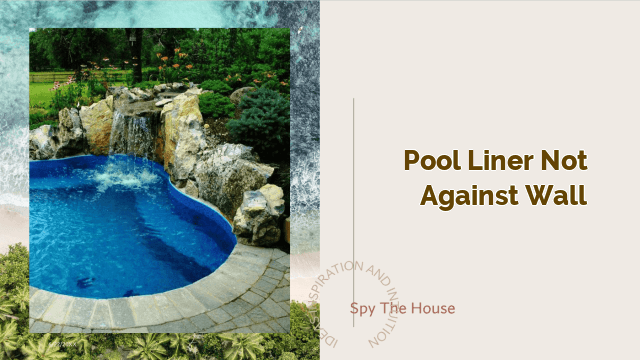blowing out pool lines
Blowing Out Pool Lines: Preparing Your Pool for WinterAs the temperature drops and the leaves start to change colors, it’s time to start thinking about closing up your pool for the winter. One of the most important steps in this process is “blowing out” your pool lines. If you’re unfamiliar with this procedure, don’t worry – we’ve got you covered. In this article, we’ll explain what blowing out pool lines entails, why it’s important, and how you can do it yourself.What is Blowing Out Pool Lines?Blowing out pool lines is the process of removing water from the pipes that run from your pool to your pump and filter system. This is typically done using a powerful air compressor, which forces air through the pipes and pushes out any remaining water. The goal is to completely empty the pipes so that they don’t freeze and crack during the winter months.Why is Blowing Out Pool Lines Important?If you live in an area with cold winters, failing to blow out your pool lines can have serious consequences. When water freezes, it expands, which can cause your pipes to crack or burst. This can lead to costly repairs and even damage to your pool’s pump and filter system. By blowing out your pool lines, you can prevent these issues from occurring and ensure that your pool is in good condition when it’s time to open it back up.How to Blow Out Pool LinesNow that you understand why blowing out pool lines is important, let’s take a look at how you can do it yourself. Keep in mind that this process can vary depending on the type of pool you have and the specific equipment you’re using. Always refer to your owner’s manual for specific instructions.1. Gather Your EquipmentTo blow out your pool lines, you’ll need an air compressor with a minimum of 5 horsepower and a maximum of 80 PSI. You’ll also need a special adapter that allows you to connect the air compressor to your pool’s plumbing system. This adapter can usually be purchased from a pool supply store or online.2. Turn Off Your Pool’s Electrical SystemBefore you begin, make sure to turn off your pool’s electrical system. This includes the pump, filter, heater, and any other equipment that is connected to your pool’s plumbing system. This will prevent any electrical shocks or damage to your equipment.3. Drain Your Pool EquipmentNext, you’ll need to drain all of the water from your pool equipment. This includes your pump, filter, and heater. You can do this by removing the drain plugs and opening any valves that allow water to escape. Make sure to also remove any skimmer baskets, return fittings, and other accessories that are connected to your pool’s plumbing system.4. Remove Debris from Your Pool LinesBefore you start blowing out your pool lines, it’s important to remove any debris that may be clogging them. This includes leaves, dirt, and other debris that may have accumulated throughout the season. You can do this by using a pool brush or vacuum.5. Connect Your Air Compressor to Your Pool’s Plumbing SystemOnce you’ve cleared your pool lines of debris, it’s time to connect your air compressor to your pool’s plumbing system. This is where the special adapter comes in. Simply attach the adapter to your pool’s plumbing system and then connect the air compressor to the adapter.6. Blow Out Your Pool LinesWith your air compressor connected, it’s time to start blowing out your pool lines. Begin with the skimmer line, which is the line that runs from your skimmer basket to your pump. Turn on your air compressor and allow it to run until all of the water has been blown out of the skimmer line. You should see water spraying out of the return jets when this happens.Next, move on to the other lines in your pool’s plumbing system, including the main drain and any additional returns. Make sure to blow out each line separately and allow enough time for all of the water to escape. You can test each line by placing your hand over the return jets and feeling for any remaining water.7. Add Antifreeze (Optional)If you live in an area with particularly harsh winters, you may want to add antifreeze to your pool lines after blowing them out. This will help to protect your pipes from freezing and cracking. To do this, simply pour a small amount of antifreeze into each line and then plug the lines with winterizing plugs.ConclusionBlowing out pool lines is an essential step in preparing your pool for winter. By removing all of the water from your pool’s plumbing system, you can prevent costly damage and ensure that your pool is in good condition when it’s time to open it back up. If you’re unsure about how to blow out your pool lines, don’t hesitate to consult with a professional. With a little bit of preparation and know-how, you can keep your pool in great shape year after year.People Also Ask:Q: Can you blow out pool lines without an air compressor?A: While an air compressor is the most effective way to blow out pool lines, it is possible to do it manually using a shop vac or a hand pump. However, this method may not be as thorough and can be more time-consuming.Q: When should you blow out pool lines?A: You should blow out your pool lines when the temperature drops below freezing, typically in the late fall or early winter months.Q: How long does it take to blow out pool lines?A: The amount of time it takes to blow out pool lines can vary depending on the size of your pool and the specific equipment you’re using. On average, it can take anywhere from 30 minutes to an hour.Meta Description: Blowing out pool lines is an essential step in preparing your pool for winter. In this article, we explain what it entails, why it’s important, and how you can do it yourself.Meta Keywords: blowing out pool lines, pool maintenance, winterizing pool, pool plumbing, pool equipment, air compressor, antifreeze.






